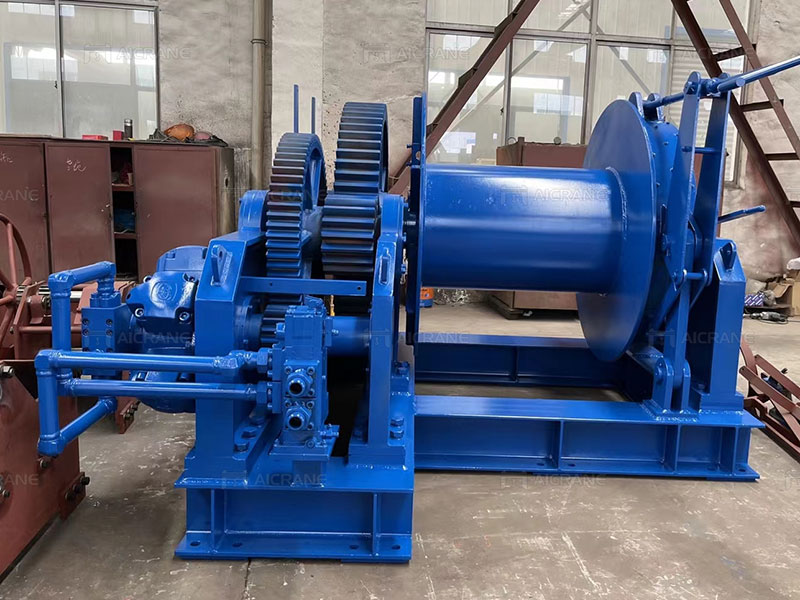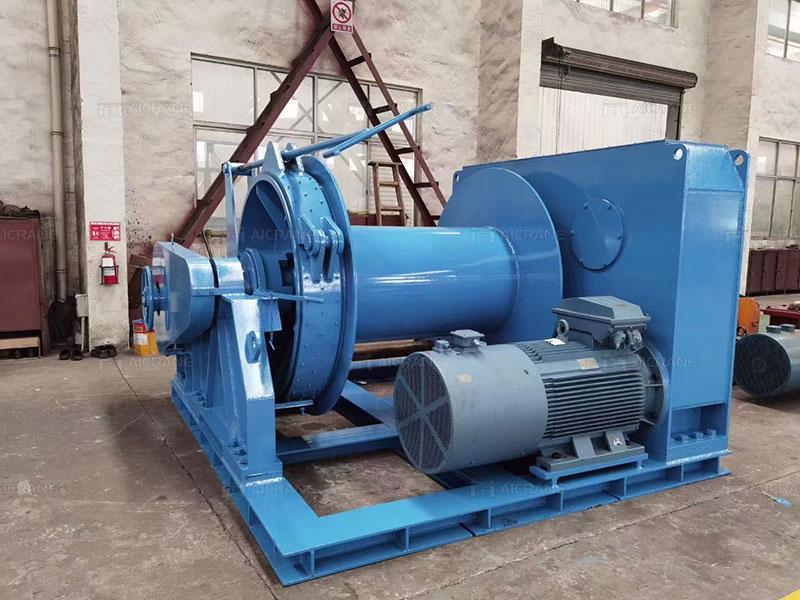In the world of maritime and heavy-duty industries, towing winches play a crucial role in various operations. Whether it’s recovering disabled vessels, salvaging wrecks, or handling offshore structures, towing winches are essential tools that ensure efficiency and safety in these complex tasks. This article provides a comprehensive overview of towing winches, exploring their types, functionalities, applications, and the advancements that have made them indispensable in modern-day towing operations.
Understanding Towing Winches
Towing winches are mechanical devices designed to handle the forces involved in towing operations effectively. They consist of a drum or spool around which a cable or rope is wound. The towing winch can be manually operated or powered by hydraulic, electric, or pneumatic systems, depending on the specific requirements of the operation.

Types of Towing Winches
Hydraulic Towing Winches:
Hydraulic winches utilize hydraulic power to operate, making them popular choices in various industries. They offer high pulling capacities and are suitable for heavy-duty towing tasks. Their smooth and controlled operation ensures enhanced safety during critical operations.
Electric Towing Winches:
Electric winches are powered by electricity, making them more convenient and versatile for various applications. They find common use in automotive and marine industries, where they can be easily integrated into existing power systems.
Pneumatic Towing Winches:
Pneumatic winches use compressed air to generate power, making them suitable for applications where electrical power sources may not be available or could pose safety risks. Their lightweight nature is advantageous in some scenarios, but their pulling capacities are generally lower compared to electric or hydraulic towing winches.

Functionality and Components
Towing winches are composed of several critical components that enable their smooth operation:
a. Drum or Spool: The primary component of the winch, the drum or spool, is where the towing cable is wound and stored.
b. Cable or Rope: The cable used in towing winches is typically made of steel wire, synthetic fiber, or a combination of both. The choice of material depends on factors such as the weight to be pulled, the working environment, and the required strength.
c. Braking System: A reliable braking system is essential to control the release of tension and prevent uncontrolled cable unwind. Modern winches often employ hydraulic or mechanical braking systems for enhanced safety.
d. Power Source: As mentioned earlier, towing winches can be powered by hydraulic, electric, or pneumatic systems, each offering distinct advantages based on the application.
e. Control Mechanism: The control system allows operators to manage the winch’s direction, speed, and tension, ensuring precise control during towing operations.
Applications of Towing Winches
a. Maritime Towing: Towing winches are extensively used in the maritime industry for vessel recovery, emergency towing, and salvage operations. They play a pivotal role in safely bringing stranded or damaged ships back to shore.
b. Offshore Oil and Gas: In the offshore industry, towing winches are employed to handle mooring lines, anchor handling, and the movement of heavy equipment on oil rigs and platforms.
c. Construction and Mining: Towing winches are utilized in construction and mining applications to move heavy machinery, transport materials, and assist in excavation operations.
d. Recovery and Rescue Operations: In land-based scenarios, towing winches are used in recovery and rescue operations to pull out stuck vehicles, recover disabled equipment, and assist in disaster response efforts.
Advancements and Safety Measures
Over the years, towing winches have undergone significant advancements to enhance their efficiency and safety:
a. Load Sensing Technology: Modern winches are equipped with load sensing technology, which automatically adjusts the pulling force based on the weight being towed. This prevents overloading and potential accidents.
b. Remote Control: Remote-controlled winches offer increased safety for operators, allowing them to control the winch marine from a distance, away from potentially hazardous areas.
c. Anti-Snagging Features: Towing winches now come with anti-snagging features to prevent the cable from getting entangled during operation, reducing downtime and minimizing potential damage.
d. Fail-Safe Mechanisms: Fail-safe mechanisms ensure that the winch automatically engages the brakes and stops operation in case of power failure or system malfunctions, preventing accidents and injuries.
Conclusion
Towing winches are indispensable tools that have revolutionized towing operations across various industries. From maritime salvage operations to construction and mining tasks, these versatile devices provide the power and control necessary for successful towing. Advancements in technology have brought about remarkable improvements in efficiency and safety, making towing winches a critical asset in modern-day operations. As industries continue to evolve, towing winches are likely to play an even more significant role in ensuring successful and secure towing operations around the globe.